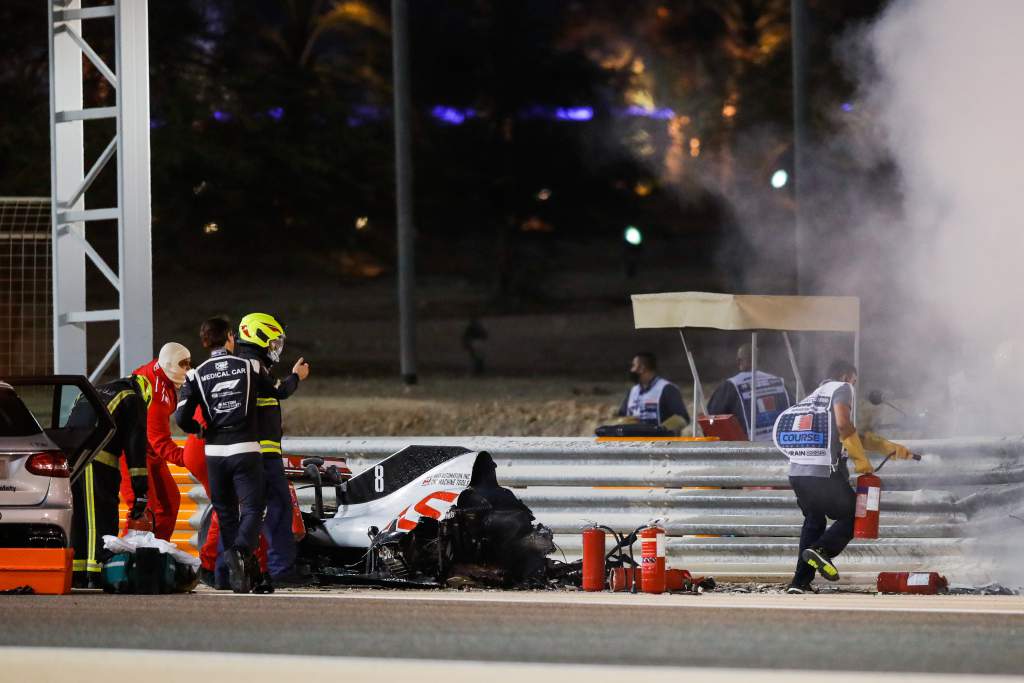Up Next

The terrifying reality of the consequences of things going wrong in motorsport was witnessed by millions around the world during the Bahrain Grand Prix.
Luckily for everyone, Romain Grosjean walked away from this enormous crash with just second-degree burns on his hands, and is set to be released from hospital on Tuesday. But for a while, I thought it was going to be far worse.
The FIA and the teams have worked very hard over many years to improve the safety in Formula 1 and this outcome is justification for those efforts. The only thing I will add is that no matter how much safety work is done, there is always an element of luck in these accidents – whether it’s good or bad.
Accidents have and always will be part of motorsport and Grosjean’s crash just shows the enormous forces involved. When the nose hit the armco barrier, it opened up like a tin can and allowed the nose and survival cell to penetrate it.
The armco is, by design, meant to decelerate the crashing vehicle, but to do that it needs to be hit by something with a surface area more like that of a road car.
Formula 1 cars, with their structural nose sections and tapered design, are like a bullet and they will penetrate this sort of structure fairly easily.
I have been pushing to raise the front of the nose to wheel-centre, but in this incident it would have done very little to help. It’s simply a case of the small nose section deflecting the rails and then penetrating the slots between the rails of the barrier.
When the chassis forced its way through the barrier, it gripped the monocoque like a G-clamp. With the highest percentage of the weight at the rear of the car, the mid-section of the chassis simply wasn’t strong enough to take the enormous forces involved.
The position of the armco barrier vertical mounting posts also played a part in the separation of the front and rear of the car. The damage to the barrier appears to show that the car tried to wrap itself around one of these.
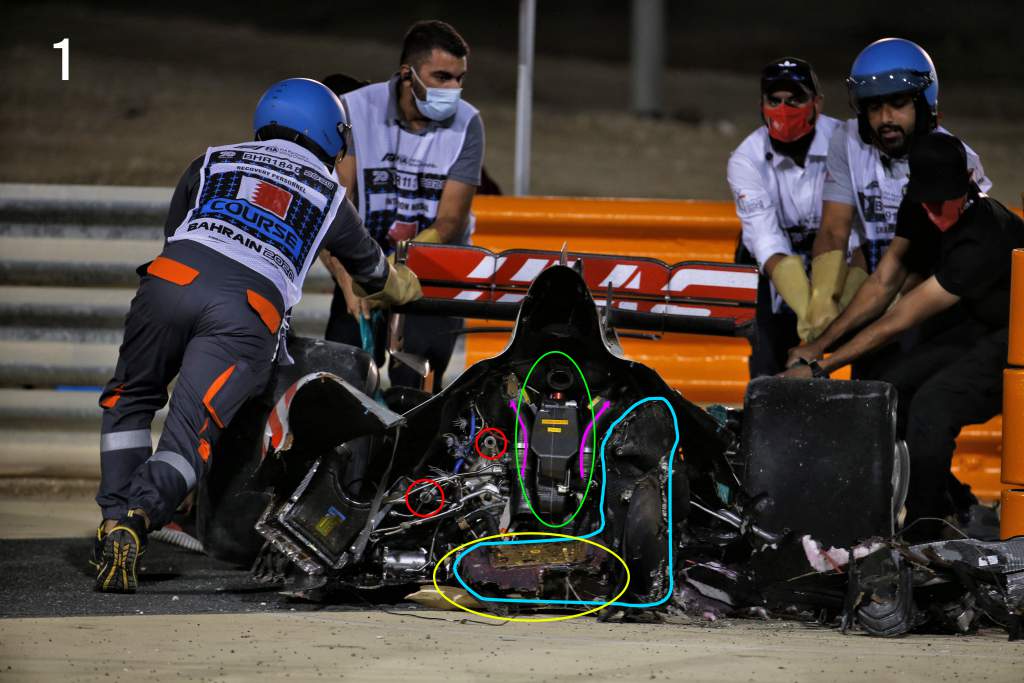
Studying the footage and the photos, it looks to me like the driver’s right-hand side (see picture 1 above – red circle and picture 2 below – red oval) engine-to-chassis studs pulled out or failed. This first allowed the engine to bend relative to the survival cell and then the left-hand side (picture 1 and 2 – blue area) chassis structure failed. This left the fuel tank (cyan area) fully exposed.
Before the engine and gearbox separated from the survival cell, there would have been a huge compression force. Basically, the survival cell hitting the barrier wanted to stop and the weight of the engine and gearbox wanted to keep going.

In our analysis just after the incident, I suggested something like a 100g impact would not be an exaggeration and with that the back of the car could weigh something like 50 tons.
This compression probably damaged the chassis structure and the pressure in the fuel tank and on the connectors, which in reality are not designed to withstand this, could have led to the initial fuel spillage. Remember, at this point in the race the cars were pretty full of fuel.
Then the engine and gearbox section rotated, failing the structure around the tank. The survival cell stopped and the other part kept going.
The fact that the engine and gearbox section was not far away from where the rear of the survival cell ended up just indicates that the impact forces had more or less been resolved before the rear end broke away.
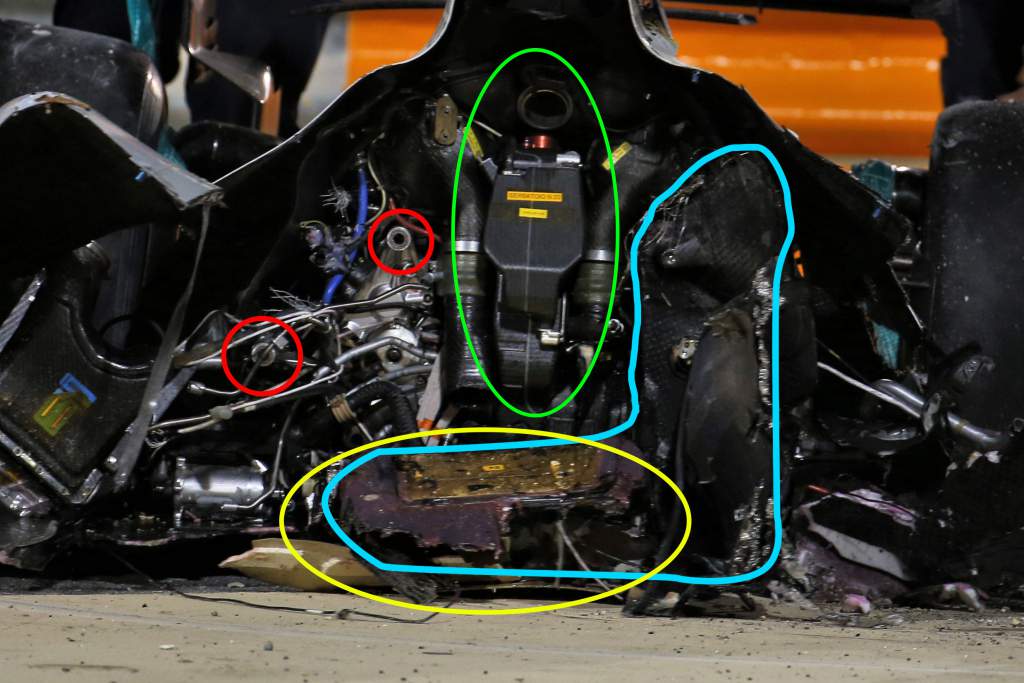
Taking an even closer look at the pieces that were left, we can also see the ERS battery pack housing (yellow oval). This unit fits into a letterbox recess underneath the fuel cell. Yes, it is separated by the floor of the chassis but still, having highly volatile fuel and a 400V source of electrical energy that close together is questionable.
I’m not completely sure the battery pack is still in the recess section of the chassis (picture 3 below – orange area). On one of the TV shots, I thought I saw something similar on the ground near the survival cell. Twang the battery pack out of place and it could very easily have ignited the spilled fuel.
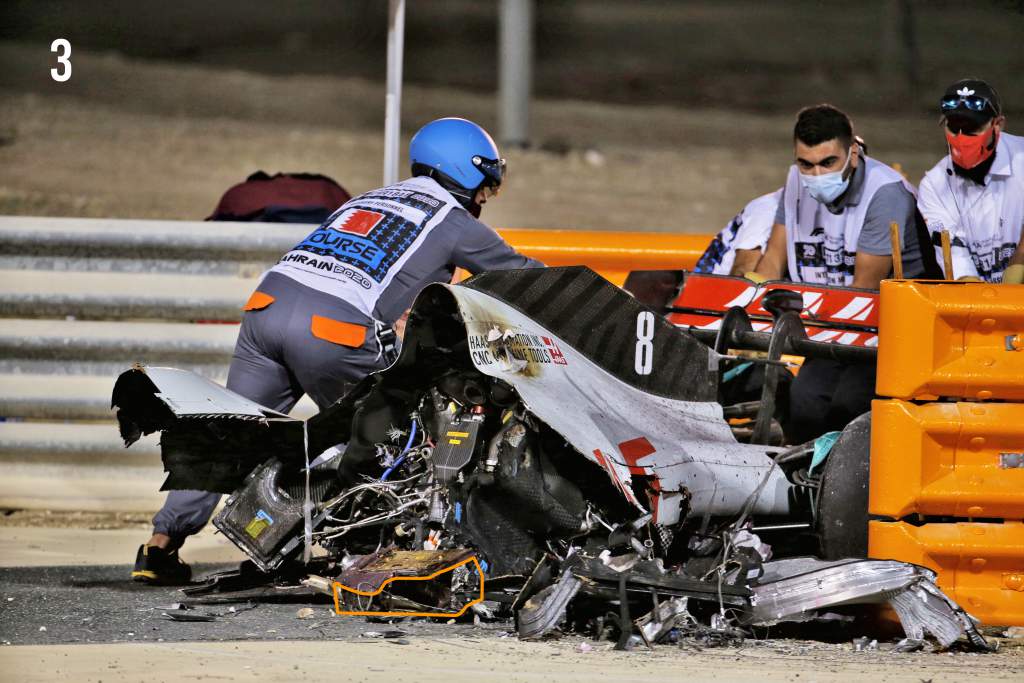
The green oval in the next close-up below is the oil tank. There will also be another oil reservoir somewhere else that keeps this tank topped up as the engine uses some oil.
The magenta arrows are the pipes from the turbo to the twin-plenum arrangement.
From these pictures, you can see how compact everything is inside the body profile. When we call these cars cling-film-wrapped, that’s actually what they are.
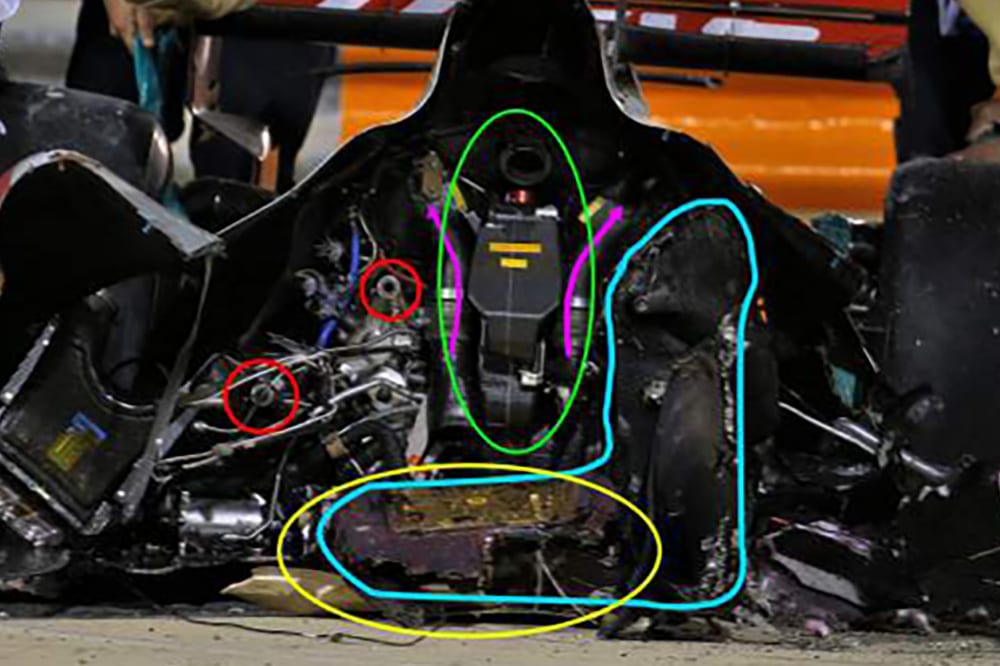
I have been involved in the sport since 1973. Over those years, many drivers have been hurt or suffered fatal injuries in incidents involving armco barriers. Both Francois Cevert in 1973 and Helmuth Koinigg in ‘74 lost their lives and Jacky Ickx in ‘76 broke his ankles, all at Watkins Glen.
Ickx was driving for Ensign at the time and I was helping the team out for a couple of races. When I went to get the car, his boots were still in the footwell, which had been cut off by the armco barrier. The picture below shows the state of the rest of the front of the car. Thankfully, Jacky survived – unlike the other two drivers I’ve mentioned.
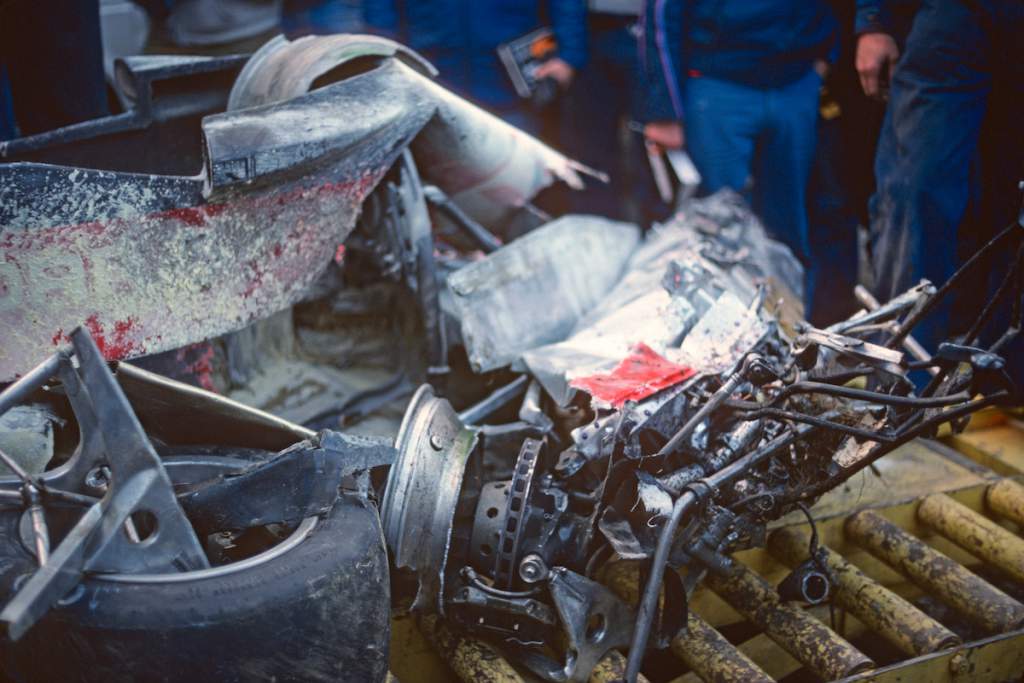
A lot has been done on chassis safety since those days and to the tracks in areas where you expect an accident to happen. But the risk is still there in areas where you don’t expect accidents.
By definition, an accident is something unexpected and, in reality, it can happen anywhere on the track.


